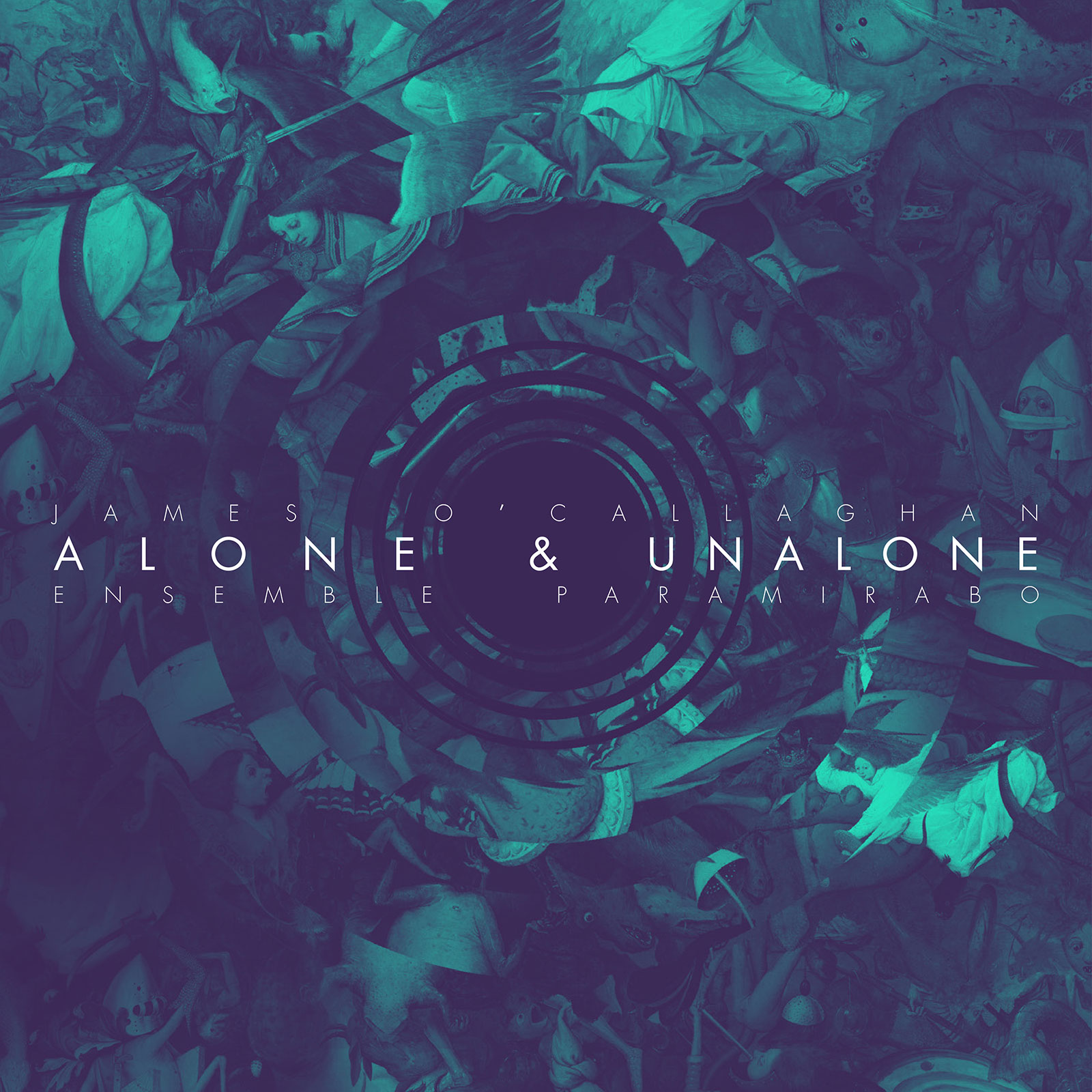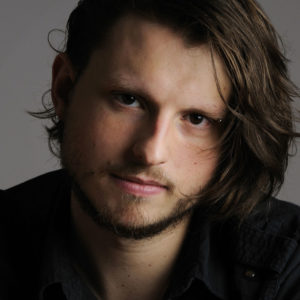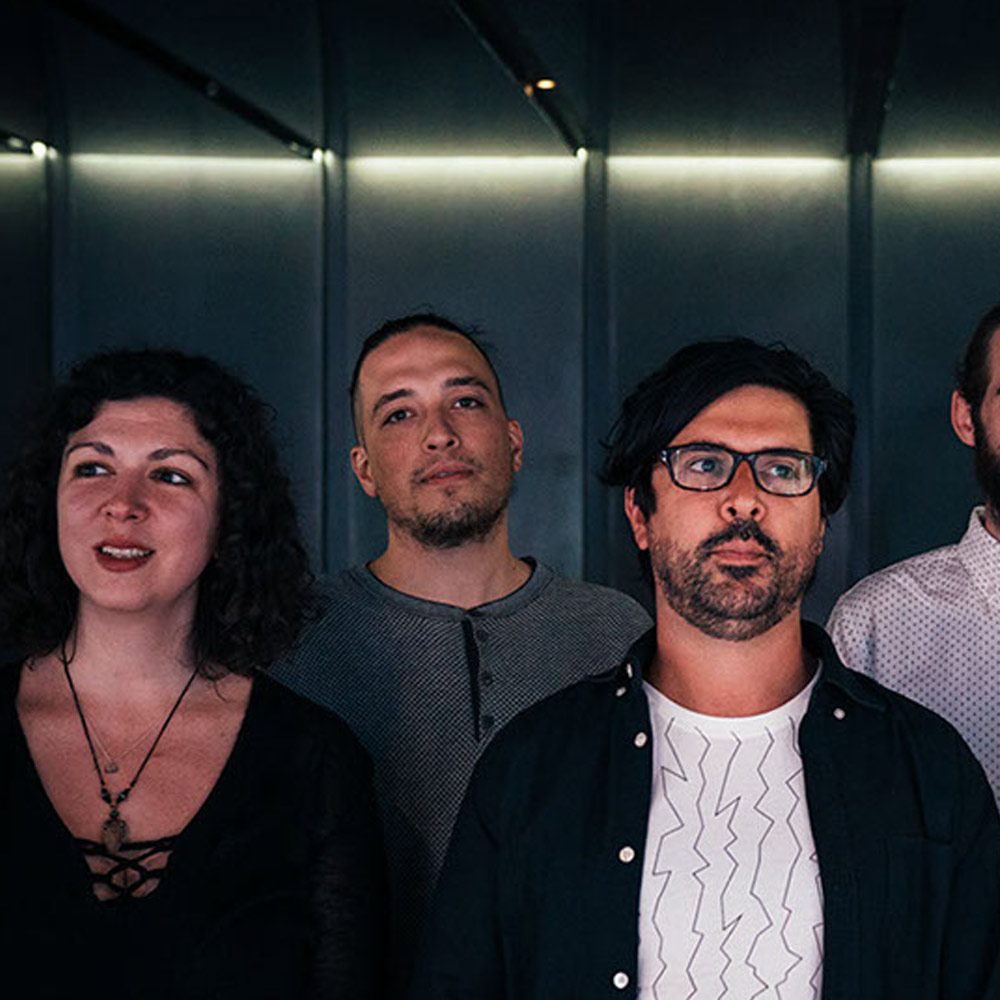
Share Album:
Alone & Unalone
James O’Callaghan composer
Ensemble Paramirabo
New from Ravello Records comes composer James O’Callaghan’s ALONE AND UNALONE, a scintillating dance between reality and abstraction that is sure to spark the listener’s imagination and unearth their most primal misgivings. Montréal-based O’Callaghan has been laurelled with innumerable awards and prizes for his work–and rightfully so. Marrying traditional instruments, ambient sounds, and the incomparable power of the human voice, ALONE AND UNALONE dares the listener to grapple with solitude.
The album opens with subject / object, where an eruption of piercing woodwinds, rhythmic punctuations, and metallic screeches are overcome at intervals by immersive silence. The piece is entropy in stereo, a kaleidoscope of dissonance sputtering and disintegrating from dystopian havoc into unearthly calm. On notes to selves follows, with an industrial hum serving as backdrop for hydraulic flourishes and silvery shrieks. Then, a flutter of deep flute tones introduces a contrasting texture. Soon, human voices cryptically repeat “notes to themselves” before receding into darkness. AMONG AM A, with its disconcerting knocks, snapping wires, and rushing winds, introduces new questions. Suddenly, an unmistakable human cough elicits our primeval empathy. Far off voices in another room converse–maybe even argue–but are too remote for straining ears. Finally, Alone and unalone portrays the solipsism of a broken psyche left to its own devices. Whispers trigger in the listener a tingling autonomous sensory meridian response. With intense clarity the movement of lips and tongues refract against the listener’s eardrums. Water rushes, submerging the scene, and violin strains introduce a glimmer of tonality before the album recedes back to silence.
ALONE AND UNALONE deconstructs the traditional relationships between composition and performance; recognition and confusion; order and chaos. The result is a moving work that touches listeners at the core of their humanity. The courage to enter into and embrace solitude is richly rewarded in James O’Callaghan’s ALONE AND UNALONE.
Listen
Stream/Buy
Choose your platform
Track Listing & Credits
| # | Title | Composer | Performer | |
|---|---|---|---|---|
| 01 | Subject / Object | James O’Callaghan | Ensemble Paramirabo | Jeffrey Stonehouse, flutes; Victor Alibert, clarinets; Geneviève Liboiron, violin; Viviana Gosselin, violoncello; Daniel Áñez, piano; David Therrien-Brongo, percussion | 14:39 |
| 02 | On Notes to Selves | James O’Callaghan | Ensemble Paramirabo | Jeffrey Stonehouse, flutes; Victor Alibert, clarinets; Geneviève Liboiron, violin; Viviana Gosselin, violoncello; Daniel Áñez, piano; David Therrien-Brongo, percussion | 12:51 |
| 03 | Among Am A | James O’Callaghan | Ensemble Paramirabo | Jeffrey Stonehouse, flutes; Victor Alibert, clarinets; Geneviève Liboiron, violin; Viviana Gosselin, violoncello; Daniel Áñez, piano; David Therrien-Brongo, percussion | 11:37 |
| 04 | Alone & Unalone | James O’Callaghan | Ensemble Paramirabo | Jeffrey Stonehouse, flutes; Victor Alibert, clarinets; Geneviève Liboiron, violin; Viviana Gosselin, violoncello; Daniel Áñez, piano; David Therrien-Brongo, percussion | 23:03 |
Recorded March 6-20, 2019 at Studio 270 in Montreal QC
Recording Engineer Robert Langlois
Mixing by James O’Callaghan
Production of Alone & unalone was made possible through generous support from the Canada Council for the Arts
Executive Producer Bob Lord
Executive A&R Sam Renshaw
A&R Director Brandon MacNeil
A&R Jacob Smith
VP, Audio Production Jeff LeRoy
Audio Director Lucas Paquette
Mastering Shaun Michaud
VP, Design & Marketing Brett Picknell
Art Director Ryan Harrison
Design Edward A. Fleming
Publicity Patrick Niland, Sara Warner
Artist Information

James O’Callaghan
James O’Callaghan (b. 1988) is a composer and sound artist based in Montréal praised for his “mastery of materials and musical form” (Electromania, Radio France). His music has been described as “very personal... with its own colour anchored in the unpredictable” (Goethe- Institut). His work spans chamber, orchestral, live electronic and acousmatic idioms, audio installations, and site-specific performances. It often employs field recordings, amplified found objects, computer-assisted transcription of environmental sounds, and unique performance conditions.

Ensemble Paramirabo
The intrepid and dedicated members of Ensemble Paramirabo come together as a single voice to perform contemporary music, showcase emerging Canadian composers, and expand the boundaries of the traditional concert experience. As a creator of innovative events, the group provides young composers with a venue for refining their trademark within Montreal’s vibrant new music scene and act as a springboard for exposure abroad. The ensemble’s flutist, Jeffrey Stonehouse, has been the group’s artistic director since its founding.
Taking its name from the piece Paramirabo by Montreal composer Claude Vivier, Ensemble Paramirabo’s roots date back to 2008 at the Conservatoire de musique de Montréal. Since its foundation, the ensemble has toured internationally through England and Mexico and has been invited to Domaine Forget, Waterloo Region Contemporary Music Sessions, New York’s Mise-En Festival, Winnipeg’s Cluster New Music Festival, and the Montreal Contemporary Music Lab. In June 2019, Paramirabo will be the ensemble-in-residence for the Domaine Forget International Music and Dance Academy’s Composition Session. A proud ambassador of local contemporary music, the ensemble has over 70 premieres and commissions to its credit.
Notes
EN
This album surveys my long-term collaboration with Montreal’s Ensemble Paramirabo, who commissioned both the earliest and the most recent work on the album. Each of the works were composed at least in part through transcription of studio-recorded sounds into instrumental notation. And so the album has a conceptual motivation — the transference of concrete sound into abstract notation, returned to the conditions from which they were derived.
All of the works also have theatrical or scenic elements, and so they are fundamentally works of concert music. We spent time recording footsteps and chair squeaks, among other “extra-musical” sounds, which reconstruct the multi-dimensionality of the works into aural imagery. The project of transporting them to a studio recording context is therefore a transformative one, reflecting the idea that music becomes something fundamentally new in each context.
FR
Cet album retrace ma collaboration de longue date avec L’Ensemble Paramirabo de Montréal, qui a commandé deux des œuvres sur le disque – la plus ancienne et la plus récente. Chacune des œuvres a été composée en partie par la transcription de sons enregistrés en studio vers la notation instrumentale. Ainsi, l’album a une motivation conceptuelle – le transfert du son concret en une notation abstraite, renvoyée aux conditions dont elles sont issues.
Toutes les œuvres comportent également des éléments théâtraux ou scéniques et sont donc fondamentalement des œuvres de musique de concert. Nous avons passé du temps à enregistrer des pas et des grincements de chaises, parmi d’autres sons «extra-musicaux», qui reconstituent la multidimensionnalité des œuvres en images auditives. Le projet de les transporter dans un contexte d’enregistrement en studio est donc transformateur. reflétant l’idée que la musique devient fondamentalement nouvelle dans chaque contexte.
— James O’Callaghan
Videos
James O’Callaghan – AMONG AM A – Ensemble Paramirabo
James O’Callaghan – Alone and Unalone – Ensemble Paramirabo (SUMMED VERSION)
James O’Callaghan – subject / object – Standing Wave
On Notes to Selves – James O’Callaghan
